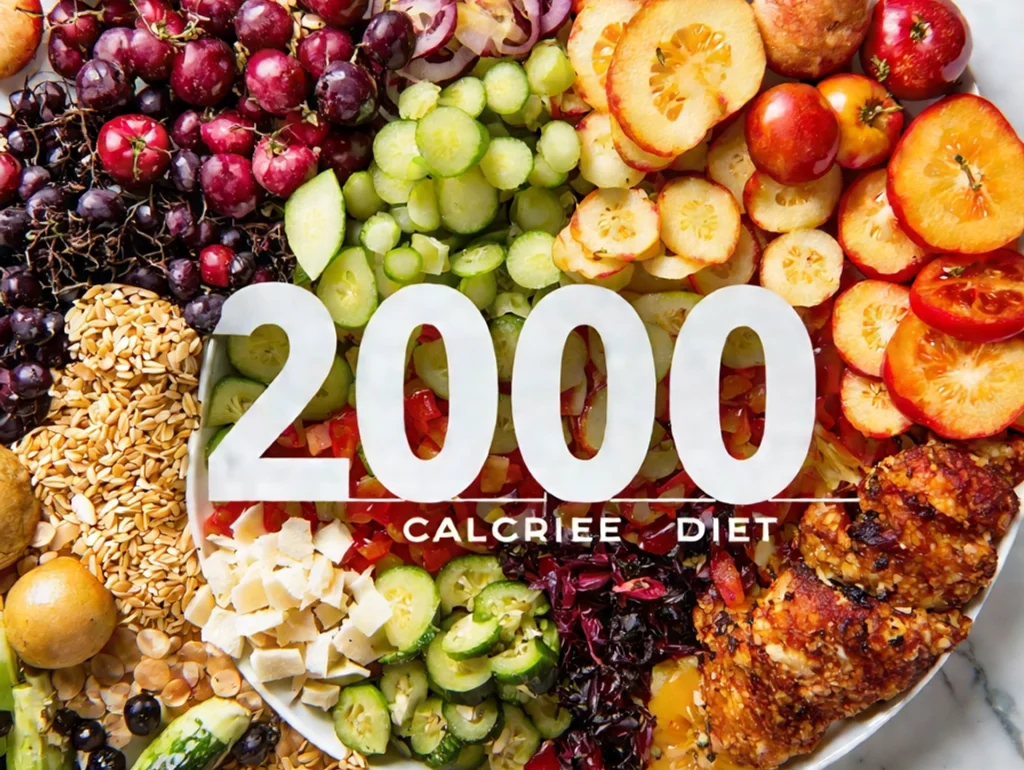When you check the nutrition facts on the back of any packaged food, you’ll see that the daily values for nutrients are based on a 2000 calorie diet. But have you ever wondered where that number comes from and what role it plays in fitness? Understanding the history and purpose of the 2000 calories standard can help you make informed dietary choices and reach your fitness goals faster.
Where Did the 2,000-Calorie Standard Come From?
The 2000 calorie benchmark comes from the U.S. Food and Drug Administration (FDA) and the Food and Nutrition Board of the National Academy of Sciences. In the early 1990s, when the FDA developed the modern Nutrition Facts label, they needed a single reference point for daily values.
To determine this, they examined survey data from the 1970s and 1980s that showed how many calories Americans typically consumed. The data revealed:
- Women generally ate between 1,600–2,200 calories per day
- Men consumed between 2,000–3,000 calories per day
- The average intake fell around 2000 calories
To create a simple and widely applicable standard, the FDA settled on 2000 calories as a general reference value. It was never meant to be a one-size-fits-all recommendation, but rather a benchmark for calculating the % Daily Values (DV) of nutrients.
How Do 2000 Calories Relate to Fitness Goals?
While 2000 calories is a useful guideline, your actual calorie needs depend on factors like age, gender, activity level, and fitness goals. Here’s how understanding this standard can help you optimize your fitness journey:
1. Weight Loss: Creating a Caloric Deficit
If your goal is fat loss, you must consume fewer calories than you burn. For many people, consuming less than 2000 calories per day creates a calorie deficit, leading to weight loss.
For example:
- If your maintenance calories are 2,500 per day, eating 2,000 calories creates a 500-calorie deficit, leading to about one pound of fat loss per week (since 3,500 calories = 1 pound of fat).
- If your maintenance is 1,800 calories, consuming 2000 calories would result in weight gain instead.
2. Muscle Building: Achieving a Caloric Surplus
If you’re looking to build muscle, you need a caloric surplus, meaning you eat more calories than you burn. A diet of 2,000 calories may not be enough for highly active individuals or bodybuilders aiming to add lean mass.
For example:
- A male athlete with a 3,000-calorie maintenance level would need to eat 3,200–3,500 calories to gain muscle efficiently.
- A woman with a 2,200-calorie maintenance level may need 2,400–2,600 calories to support muscle growth.
3. Energy Balance and Nutrient Tracking
Using 2,000 calories as a reference point makes it easier to compare food labels and adjust your diet. The % Daily Value helps you quickly assess nutrient intake. For example:
- 30g of protein might be labeled as 60% of the daily value, assuming 50g of protein is the reference intake.
- If you’re more active and need 100g of protein per day, that 60% actually equals only 30% of your goal.
By knowing your actual calorie and macronutrient needs, you can fine-tune your diet while using food labels as a helpful guide.
Should You Follow a 2000-Calorie Diet?
A 2,000-calorie diet may be ideal for some but too high or low for others. Here’s how to determine if it works for you:
- Calculate Your Basal Metabolic Rate (BMR) – This is the number of calories your body needs at rest. You can use the Mifflin-St Jeor Equation to estimate your BMR:
- Men: (10 × weight in kg) + (6.25 × height in cm) – (5 × age) + 5
- Women: (10 × weight in kg) + (6.25 × height in cm) – (5 × age) – 161
- Determine Your Total Daily Energy Expenditure (TDEE) – Multiply your BMR by your activity level:
- Sedentary: BMR × 1.2
- Light Activity: BMR × 1.375
- Moderate Activity: BMR × 1.55
- Very Active: BMR × 1.725
- Super Active: BMR × 1.9
- Set Your Goal:
- If TDEE = 2,200, eating 2,000 calories leads to a slight deficit (good for slow weight loss).
- If TDEE = 3,000, 2,000 calories would be too low, leading to muscle loss and low energy.
The ideal man or woman who would need exactly 2,000 calories per day would likely be a moderately active woman around 5’4″ (163 cm), 140 lbs (63.5 kg), and 30 years old or a sedentary man around 5’9″ (175 cm), 160 lbs (72.5 kg), and 30 years old. To determine if 2,000 calories is right for you—or to adjust your serving sizes—use the calculation method below:
- Find your Total Daily Energy Expenditure (TDEE) using the Mifflin-St Jeor Equation:
- Men: (10 × weight in kg) + (6.25 × height in cm) – (5 × age) + 5
- Women: (10 × weight in kg) + (6.25 × height in cm) – (5 × age) – 161
- Multiply by activity level (1.2 for sedentary, 1.55 for moderate activity, etc.).
- Adjust your servings: If your TDEE is 25% higher (2,500 calories) than 2,000, multiply serving sizes by 1.25. If it’s 20% lower (1,600 calories), multiply by 0.8.
How to Determine Serving Size
Example: If a food serving has 200 calories, a person needing 2,500 calories should eat 1.25 servings (250 calories), while someone needing 1,600 calories should eat 0.8 servings (160 calories). This simple formula helps tailor portion sizes based on actual needs, ensuring optimal results for weight loss, maintenance, or muscle gain.
Key Takeaways
- 2000 calories was chosen as a nutrition label standard based on survey data, not a universal diet recommendation.
- It provides a baseline for % Daily Values, helping people assess nutrient intake.
- Your actual calorie needs depend on your BMR, activity level, and fitness goals (weight loss, maintenance, or muscle gain).
- Understanding 2000 calories can help you track food intake more effectively and make better nutrition choices.
By knowing how 2000 calories fits into your individual fitness plan, you can reach your goals faster, whether you want to lose fat, maintain weight, or build muscle.
Read Next…
- How to Stay Full While Losing Weight: The Role of Stomach Volume and Calories
- Why 2000 Calories? The Origin and Role of the Standard Daily Value
- What to Expect from a Check-In with an Online Health Coach
- How to Track Nutrition and Make Adjustments to Reach Your Health and Fitness Goals
- How to Set Diet Goals to Reach Your Health and Fitness Goals




